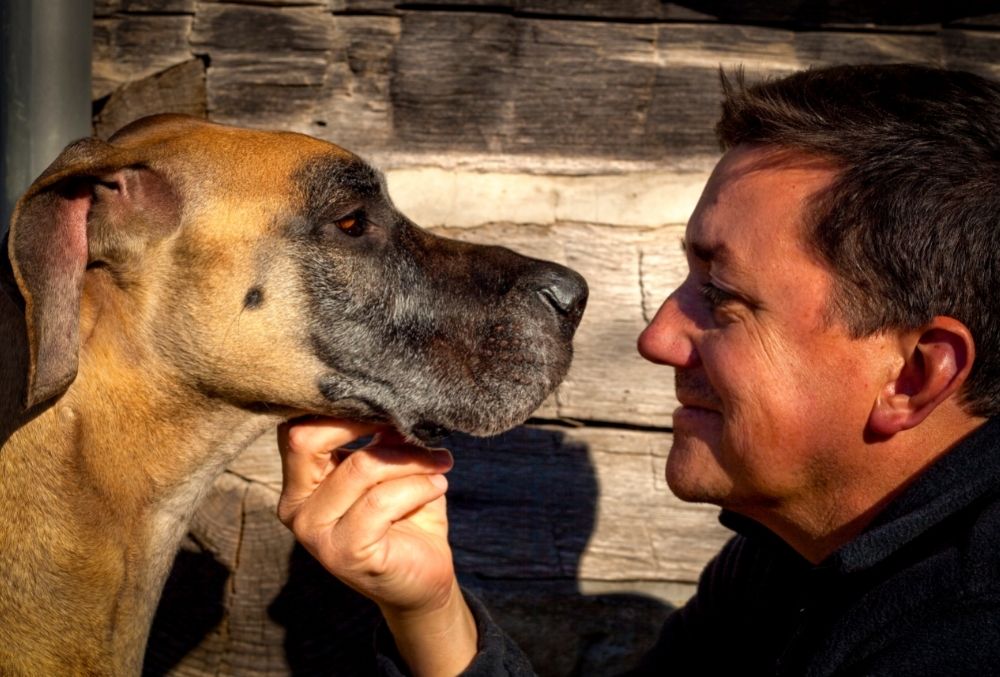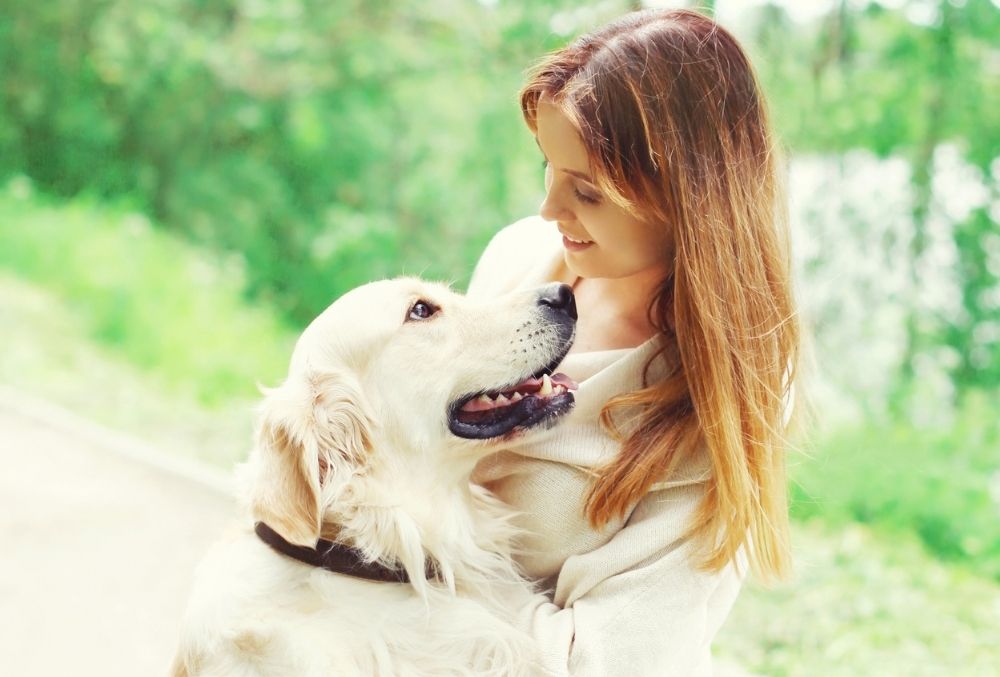This post may contain affiliate links. Please read my disclaimer policy
If you have a pet, you have likely wondered whether they can read your facial expressions. To many owners, it feels like they can – often, your pet dog can feel like part of the family, and in the wild, dogs tend to have very similar social structures in their packs as humans do in workplaces, families, and friendship groups.
In both human and dog social groups, there are long-term, enduring bonds formed between members. They regularly share the same living space (or at least live in close proximity), they often share emotional experiences, and can empathize or sympathize with each other’s feelings.
In humans, much of this emotional communication is done verbally, through communication with words. However, this isn’t the only way we tell each other how we are feeling – a lot can be said with a look, with a raise of the eyebrows, or with a movement of the lips.
But, can man’s canine best friend understand these subtle social cues? And if they can, how did this ability come to be? Read on to answer all of these questions, and learn everything you need to know about dogs and facial expressions.
Contents
Can Dogs Recognize Human Facial Expressions?
In simple form, yes, your dog can recognize your facial expressions.
Research done in Hungary found that although dogs aren’t neurologically wired to understand facial expressions in the same way that humans are (we have a dedicated area in the brain, aptly known as the Fusiform Face Area which helps us recognize faces and facial expressions), they do still work hard anyway to understand what humans mean with their facial movements.
Psychologists and behaviorists at the University of Bari Aldo Moro, in Italy, showed dogs photographs of human faces showing the six basic emotions, such as anger, fear, happiness, sadness, surprise, and disgust. They concluded that dogs are able to recognize expressions in these photographs, and are then able to interpret emotions from this.
The dogs were particularly good at recognizing ‘arousing emotional states’, such as angry, fearful, or happy faces, and seeing these faces gave them an increase in cardiac activity (i.e., their heart rate increased).
After seeing these pictures, dogs were also less likely to return to their food bowls to eat, which indicates that they may have been experiencing stress after seeing these arousing emotions.
All in all, the study indicated that the dogs were sensitive to the main emotional cure that are conveyed by human faces, and respond emotionally in turn. Evidence was found to support the existence of an asymmetrical emotion modulation system within the dog brain, which allows them to process basic human emotions.
However, dogs don’t get excited about human faces, in the same way that humans do – they don’t show the same kind of neural stimulation, and seem equally excited by both the front and back of their owner’s head.
How Did the Communication Between Canines and Humans Begin?

Originally, dogs were domesticated by humans to perform work tasks – pulling sleds, helping on the hunt, and working as guard dogs to keep the family safe from other beasts or marauding humans.
However, over time, their role in the family unit and human social groups started to change. They became companions and were bred as little lap dogs and toy dogs, which emphasized the importance of cuteness and their friendly nature.
With the invention of mass-produced dog food and improved veterinary care, dogs moved from outside the home, to indoors, and were socialized in the home to be friends.
With this, they began to gain a better understanding of human emotion, beyond their training. Their ability to interpret human’s mood, and anticipate their needs began to develop so that they were rewarded with shelter, food, love, and attention. This positive reinforcement kick-started a loop, where canines increased their efforts to understand humans, so that they were then rewarded.
Nowadays, humans tend to be the center of a dog’s world, as they depend on us for exercise, shelter, food, and affection. They monitor their owner’s every move, and can tell if we are focused, mad, relaxed, or happy.
Do Dogs Have Their Own Facial Expressions?
Dog owners have said for years that their pets have their own facial expressions, and can communicate by raising their eyebrows. And now, there is some scientific research to back this up.
Researchers have found that one of the key factors differentiating wolves and dogs, is that dogs have two specialized facial muscles that are thought to have evolved after they were domesticated by humans.
Domestication is thought to have transformed the muscular anatomy of dogs’ facial muscles so that they were better able to communicate with humans. This resulted in dogs developing the ability to raise their inner eyebrows more intensely, which wolves cannot do.
Behavioral data gathered from both dog and wolf populations has shown that domesticated dogs are also able to produce eyebrow movement significantly more often, and with higher intensity, than their wild wolf counterparts are able to.
This can look a lot like the expressions that humans produce when they are sad, and the researchers then concluded that the production of this facial expression in dogs may potentially trigger a nurturing response in their humans.
This emotional expression (and the muscular anatomy that is behind them), have likely been produced through mechanisms of evolution and selective breeding, based on the preferences of human breeders.
The muscular anatomy differences between wild wolves and domesticated dogs are only found around the eye and eyebrow, and otherwise, their muscle structure is relatively uniform.
As humans domesticated dogs more than thirty-three thousand years ago, over this time they have developed the ability to both read and produce facial expressions, in ways that most animals cannot.
For example, domesticated pets and working dogs are a lot more skilful in deciphering and responding to human communicative cues, such as pointing gestures, emotional facial expressions, or following the gaze of a person than chimpanzees, which are widely considered to be human’s closest evolutionary relatives.
Eye contact is integral to non-verbal human communication, and dogs seem to have clocked this, along with their mournful eyebrow raises.

For example, dogs tend to establish eye contact with their trusted humans when they cannot solve a problem on their own. This eye contact signals that they need help, and can aid in directing human attention to the problem that the dog is experiencing (for example, think of your golden retriever looking at you and standing by the door when he wants to go out, or your Jack Russel glancing back and forth between you and the Christmas turkey that she would like to eat).
Eye contact can also help dogs to determine when communication is relevant to them, as dogs usually ignore pointing from humans unless it is paired with direct eye contact.
Eye contact can also help to create an attachment between humans and dogs – puppies seek to establish eye contact with humans from an early age. This very human attribute helps to cement affection between the two.
Overall, it can be said that dogs do have some behaviors that can be compared to human’s facial expressions. Though they don’t have the same muscular structure as humans, and therefore don’t actually have the ability to produce a lot of our expressions, they have developed specific muscles, and behaviors, to tug on our heart strings.
Final Thoughts
Worry not – your dog can understand your facial expressions, and is motivated to help you, as they depend on you for a lot of their welfare and wellbeing.
If you look scared, or happy, they will feel similar levels of emotional arousal to you – which can manifest itself in the form of a rising heart beat. Though they can’t articulate their emotions verbally, they can express sadness, helplessness, and want, among other basic emotions.
Watch your dog closely to see if you can identify these behaviors in your furry, four legged best friend.

